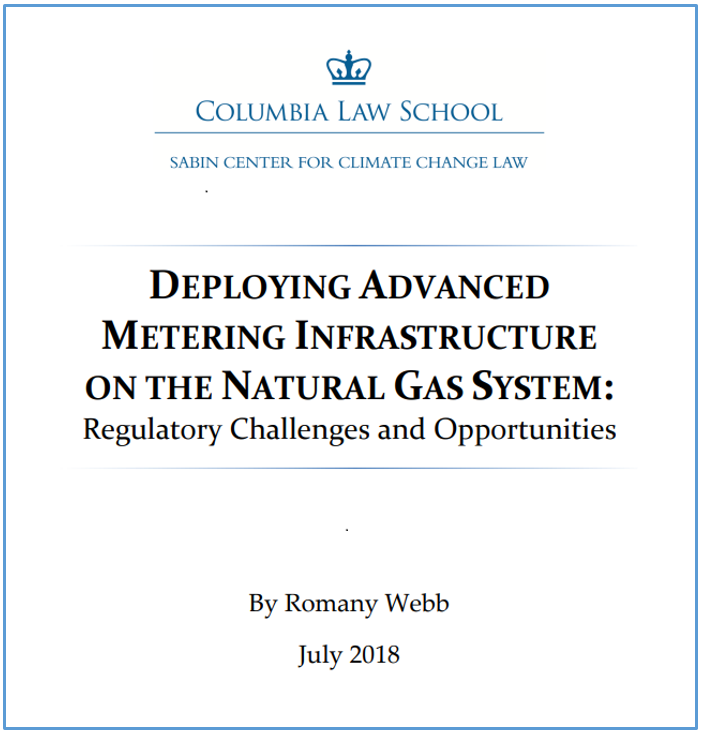By Michael B. Gerrard

The New York and New Jersey environmental departments issued decisions on Friday, May 15 denying approvals for a natural gas pipeline. Though the decisions were based primarily on the adverse impacts that construction of the pipeline would have on water quality and wetlands, they also demonstrated the force of New York’s new Climate Leadership and Community Protection Act(CLCPA), and New York’s resolve to phase out the use of natural gas.
Transco, a subsidiary of the Tulsa-based Williams Companies, proposed to build a pipeline carrying natural gas (mostly from hydraulic fracturing in Pennsylvania) under wetlands and Raritan Bay in New Jersey, then under lower New York Bay, and connecting with an existing pipeline about three miles offshore of Rockaway Peninsula in Queens. National Grid would use the gas to serve customers in Brooklyn, Queens and Long Island.
In the bays the pipeline would have been built in a trench four feet under the water bottom in sediments that are contaminated with mercury, copper and other pollutants. The construction would have stirred up the sediments and released the pollutants.
Interstate natural gas pipelines are primarily regulated by the Federal Energy Regulatory Commission (FERC), which approved this pipeline on May 3, 2019. However, Section 401 of the Clean Water Act provides that before certain work can be done in or under the waters of the United States, the states must certify that the work would not impair the state’s waters.
In its May 15 decision, the New York Department of Environmental Conservation (DEC) denied the needed water quality certification. DEC had received over 16,000 written public comments on the application. The decision relied primarily on the impacts that the dispersed chemicals would have on a 1,000-foot wide corridor that included a critical resource area for hard clams. DEC found further that because mercury bio-accumulates, the adverse effects could also migrate up the food chain.
DEC did not stop there, however. Relying on a procedure that allows consideration of “qualitative assessments” relevant to proposed projects, DEC also looked at the pipeline’s impact on greenhouse gas emissions, which in the decision’s words “cause climate change and thus indirectly impact water and coastal resources.” DEC found, “GHG emissions associated with the Project include those from the full lifecycle of natural gas that will be transported through the Project. This includes upstream emissions, GHG emissions associated with the construction and operation of the Project, and downstream emissions.” DEC explicitly stated that its analysis considered leakage of methane at the fracking sites in Pennsylvania, emissions where the gas is burned in power plants and buildings in Brooklyn, Queens and Long Island, and any emissions in between. The look at out-of-state upstream emissions is especially interesting, as these are not usually considered in a state’s GHG emissions inventories, but it appears New York is adopting a different accounting method. The decision states, “because natural gas that is extracted outside of the State would be transmitted through the Project to serve National Grid customers in New York City and Long Island, upstream GHG emissions associated with the Project would be considered part of Statewide GHG emissions” under the CLCPA. (FERC does not consider upstream emissions in its own decisions under the National Environmental Policy Act and the Natural Gas Act.)
DEC then included this very important paragraph in its decision:
[I]n order to achieve the State’s critical and ambitious climate change and clean energy policies, the State needs to continue its ongoing transition away from natural gas and other fossil fuels. While the Department recognizes that many building assets in the State currently rely on natural gas for heating and other energy uses, the continued long-term use of fossil fuels is inconsistent with the State’s laws and objectives and with the actions necessary to prevent the most severe impacts from climate change. Therefore, the State must continue to support the ongoing transition to renewable and other clean sources of energy, as it works to ultimately eliminate all fossil fuel combustion sources that cannot be counterbalanced by guaranteed permanent carbon sequestration. Without appropriate alternatives or GHG mitigation measures, the Project could extend the amount of time that natural gas may be relied upon to produce energy, which could in turn delay, frustrate, or increase the cost of the necessary transition away from natural gas and other fossil fuels.
In short, DEC said, “”[t]he use of natural gas … to produce electricity would be inconsistent with” the requirements of CLCPA, which “will ultimately require a transition away from natural gas and other fossil fuels to produce energy.”
The scope of states’ authority under Section 401, particularly when it is used to block federally-approved projects such as this pipeline, has been the subject of intense controversy and litigation. In August 2019 the Environmental Protection Agency proposed to revise its regulations under Section 401 in a way that would ease the approval of energy projects. These revisions have not gone into final form.
The pipeline at issue here is a key part of a larger controversy. In May 2019 National Grid imposed a moratorium on new natural gas connections. Many observers felt that the moratorium was a tactic by National Grid to pressure New York to approve the pipeline. That led to an uproar, Governor Andrew Cuomo threatened to revoke the company’s franchise, and the Public Service Commission launched an enforcement action related to the moratorium. Pursuant to the resulting settlement agreement, National Grid issued a report on May 8, 2020 that identified enhancements to existing infrastructure combined with incremental energy efficiency and demand response measures as a way to meet the projected gap between demand and supply of natural gas even without the pipeline. DEC declared, “Critically, as compared to the project, National Grid concludes that this alternative is less environmentally impactful, in terms of water quality, GHG emissions and otherwise, and more consistent with the requirements” of CLCPA.
Meanwhile, Transco had applied to the New Jersey Department of Environmental Protection (DEP) for a permit under its Freshwater Wetlands Protection Act for the portions of the pipeline that would be under New Jersey wetlands. Within hours after New York DEC issued its decision, DEP issued its own decision denying the wetlands permit. The decision recounted that New Jersey’s wetlands regulations require applicants “to demonstrate that there is a compelling public need for the proposed activity.” DEP found that since New York, which would be the “ultimate beneficiary” of the pipeline, decided it did not need the gas, and without the connection to the Rockaways there would be no place for the gas to go, the “application has been rendered effectively moot” and issuance of the permit “would be futile.”
We will soon see if Transco challenges the New York and New Jersey decisions in court. Whatever happens, DEC’s decision is a strong declaration that the department is serious about phasing out most or all use of natural gas in the state, blocking the construction of new natural gas infrastructure, and reducing GHG emissions in accord with the mandates of the CLCPA. The decision also highlights the importance of swiftly implementing not only the CLCPA, but also New York’s brand-new law on siting renewable energy facilities, which will be needed in large numbers to substitute for natural gas-fired electric generating plants and to power the electric vehicles that will replace those with gasoline and diesel engines.
Tiffany is the Communications Associate at the Sabin Center for Climate Change Law.




